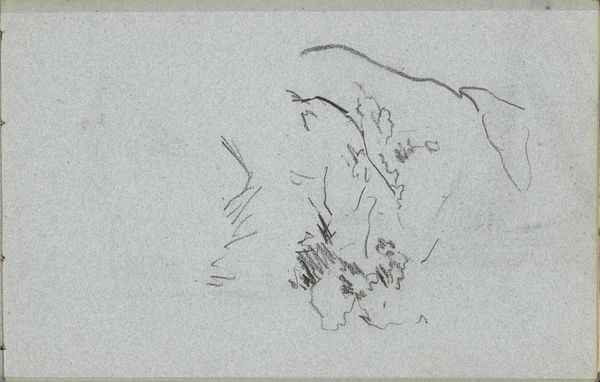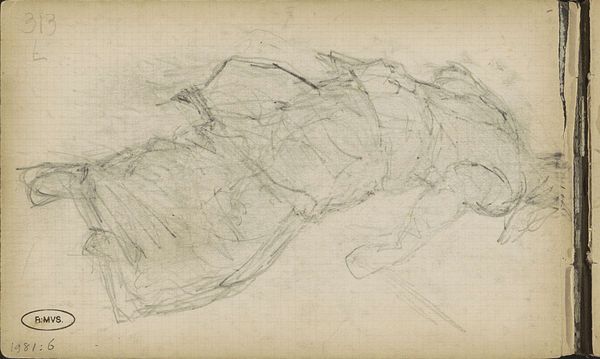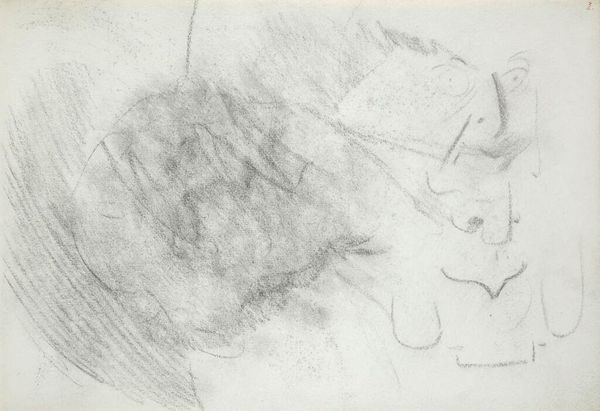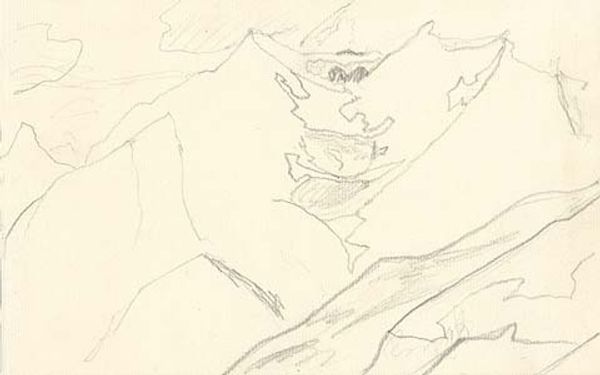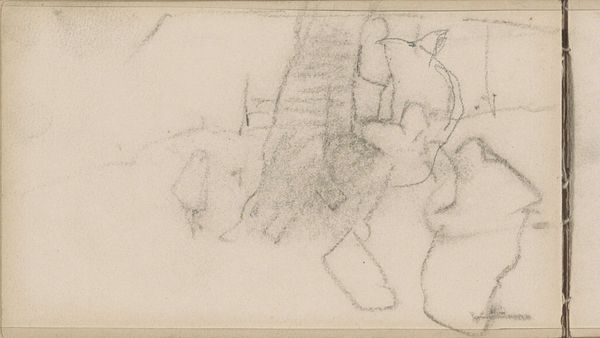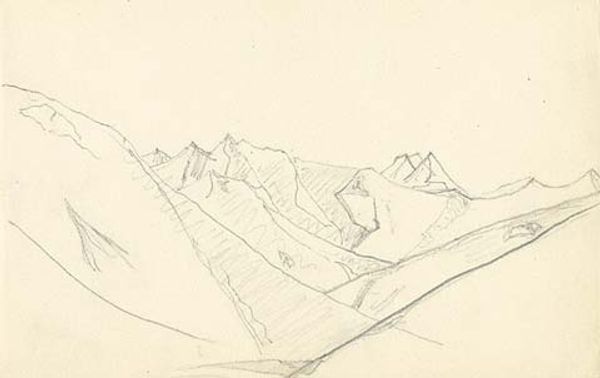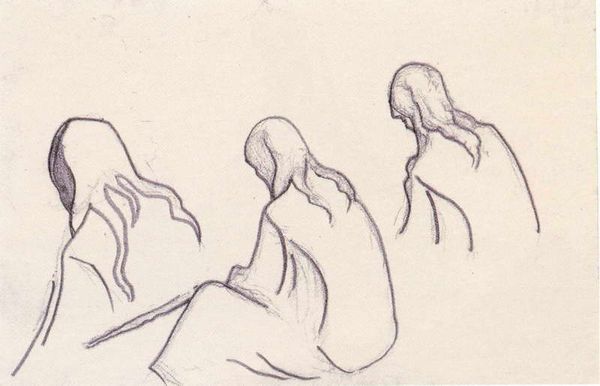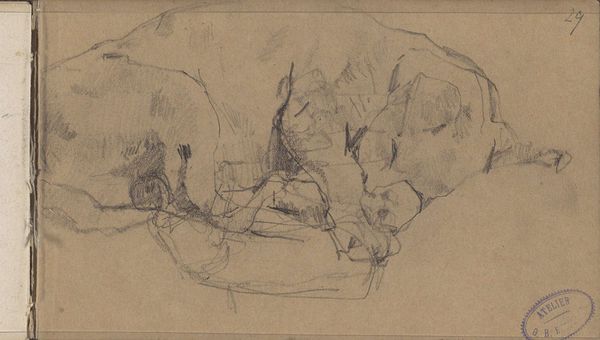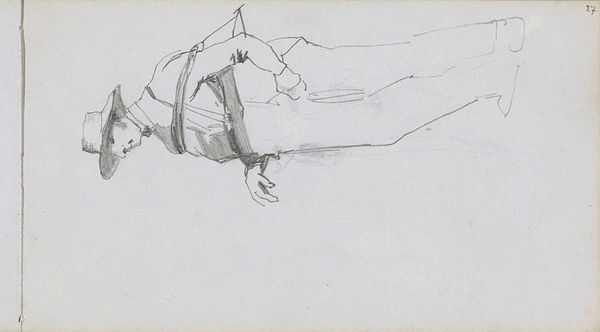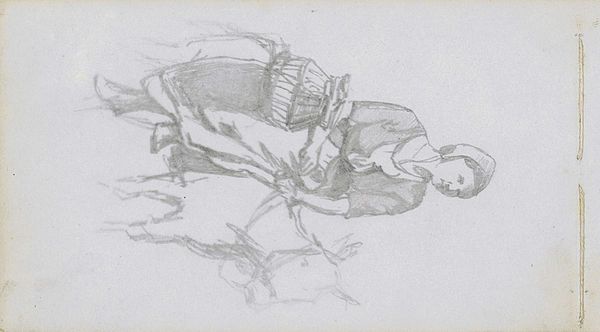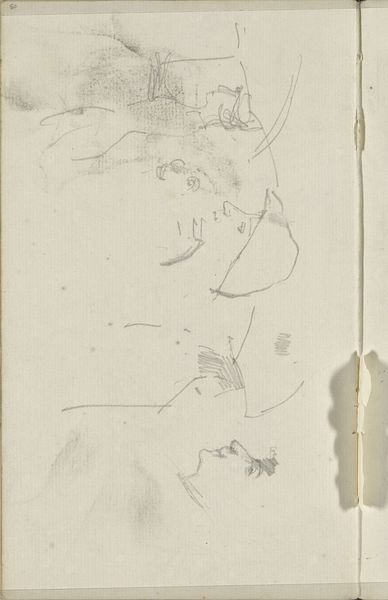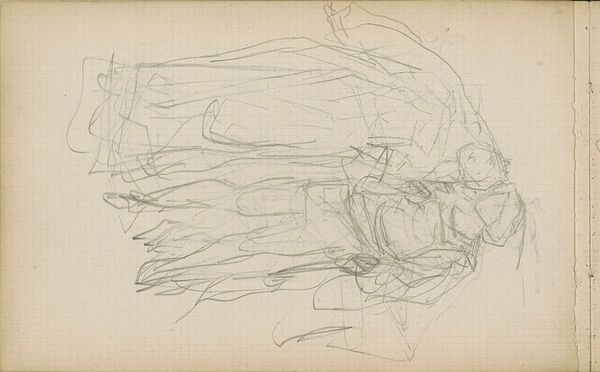
drawing, paper, pencil, graphite
#
drawing
#
paper
#
geometric
#
pencil
#
abstraction
#
line
#
graphite
Copyright: Public domain
Curator: This is Nicholas Roerich’s drawing from 1924, a piece titled "Higher than mountains," crafted using pencil and graphite on paper. Editor: My first impression is of a ghostly landscape—fragile, almost dissolving into the blankness of the paper. The linework suggests an ethereal realm, weightless. Curator: Indeed. Roerich was deeply involved in spiritual movements and theosophy, viewing art as a means to communicate higher truths. This drawing utilizes geometric shapes and line work to evoke the sublime experience of mountainous regions, reflecting Roerich's travels in the Himalayas. The use of minimalist lines invites meditation on vastness and spiritual ascent. Editor: It strikes me how the work lacks traditional perspective, leaning towards abstraction. Was Roerich consciously eschewing conventional representation for something more symbolic or perhaps tapping into a pre-modern visual language? And how does the composition itself contribute to its meaning, the off-centered cluster balancing on the right negative space, creating tension? Curator: His engagement with symbolism and esoteric philosophies is crucial here. He’s aiming to depict a spiritual or transcendental reality, and thus rejects naturalistic rendering. Roerich used art as a vehicle for his socio-political ideas on culture, seeking harmony across divides through this vision. In the wake of World War I, it became popular for people to seek this higher spiritual harmony. Editor: Right, the context is critical. Post-war disillusionment propelled a search for alternative value systems and spiritual reassurance. Looking closer, the pencil strokes are deliberate, aren't they? Layered to suggest depth without actually defining it. This reinforces the dreamlike nature. What strikes me too, in relation to post war disillusionment is the fact that he seems to show strength even through this soft pencil style. Curator: I agree. He expertly uses shading to show a depth even within this apparent softness, this illustrates his idea of striving toward spirituality, to get through the grey to arrive into bliss. In all his creative and philosophical quest he promoted beauty. Editor: Ultimately, Roerich offers not just an image, but an experience, a visual mantra, resonating deeply within its historical moment. Curator: A visual articulation of profound aspirations for both art and society indeed. Thank you for highlighting Roerich’s contribution to the language of art and humanity’s struggle in the face of despair.
Comments
No comments
Be the first to comment and join the conversation on the ultimate creative platform.
